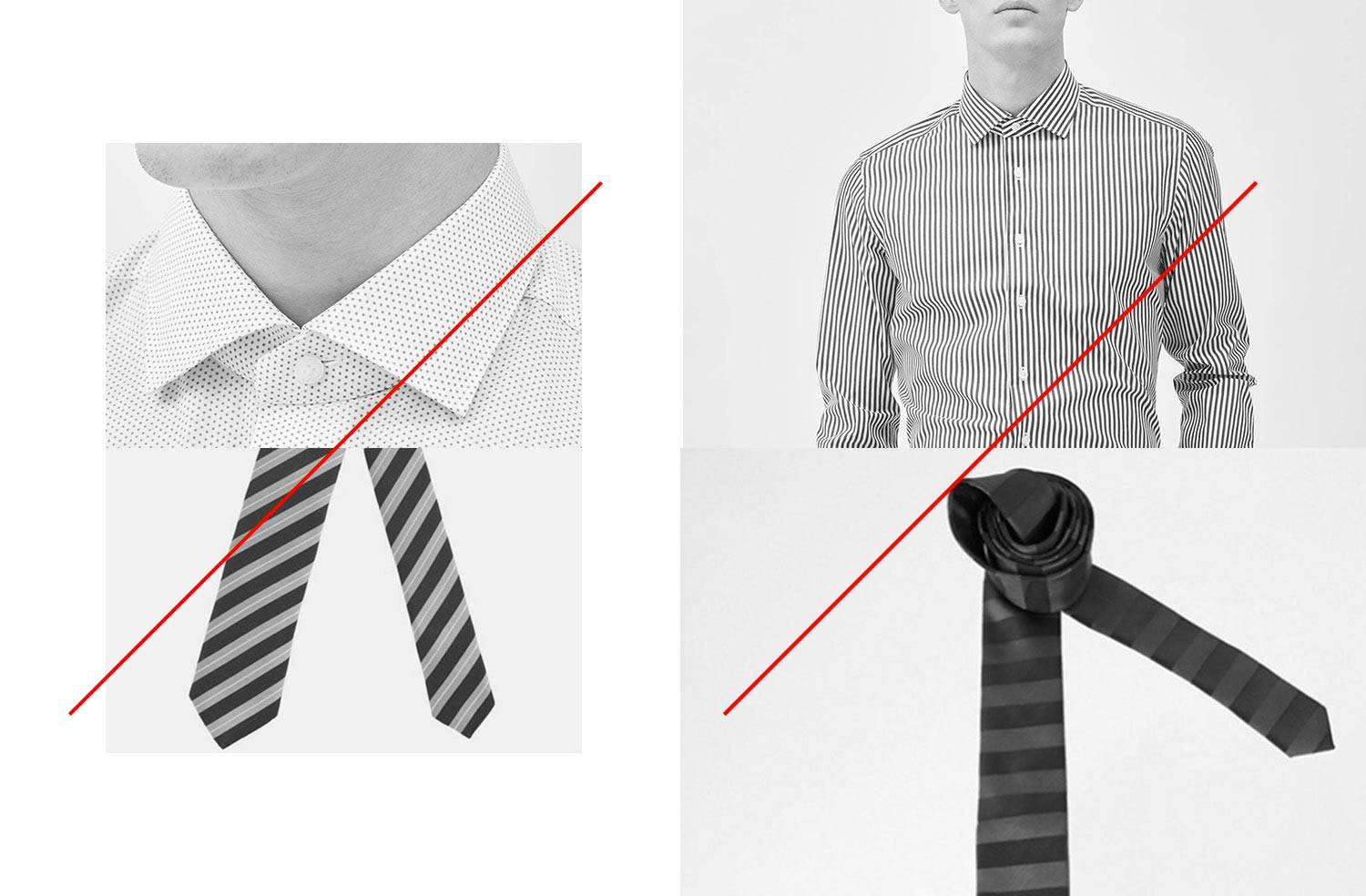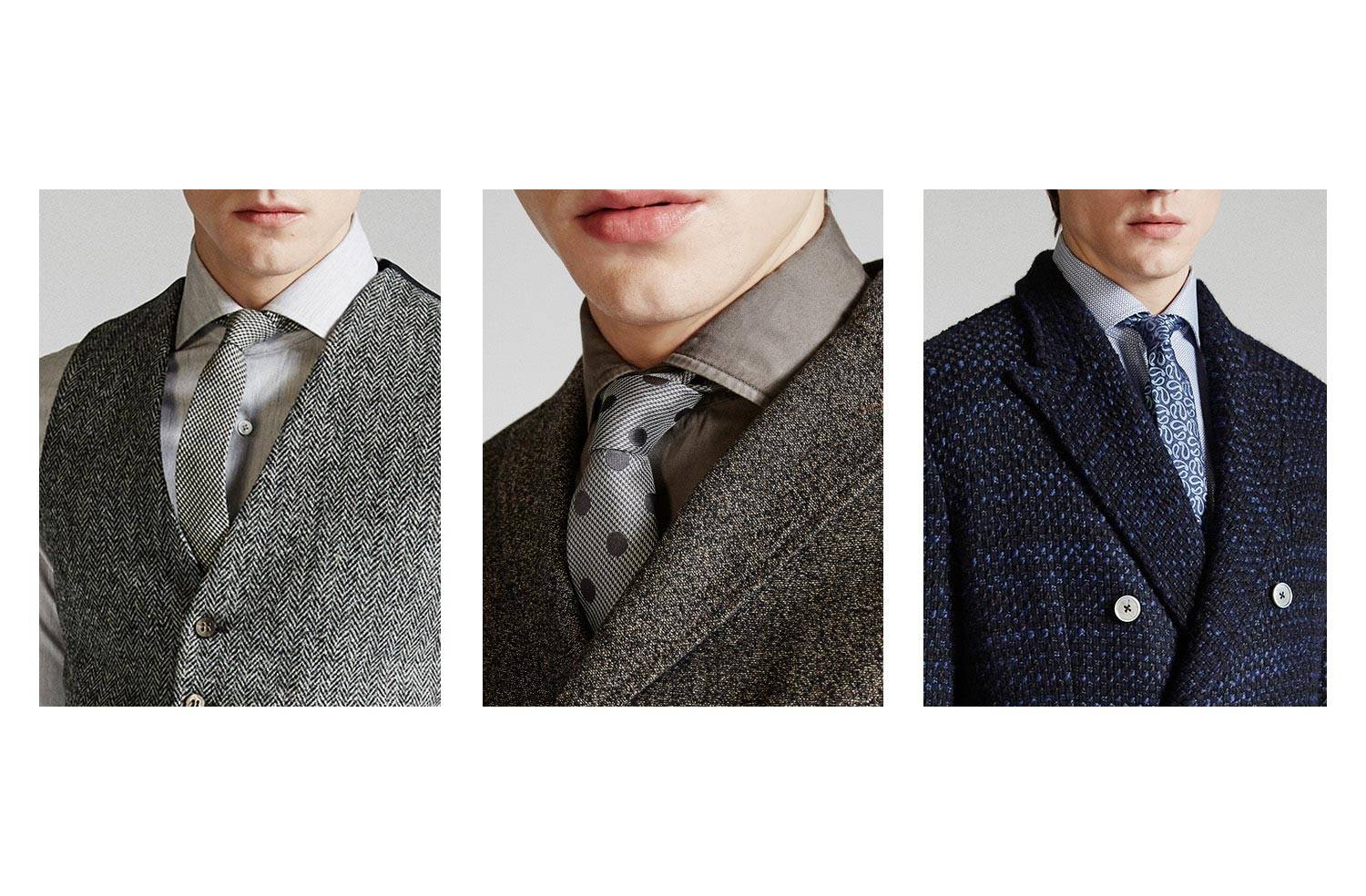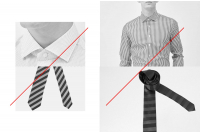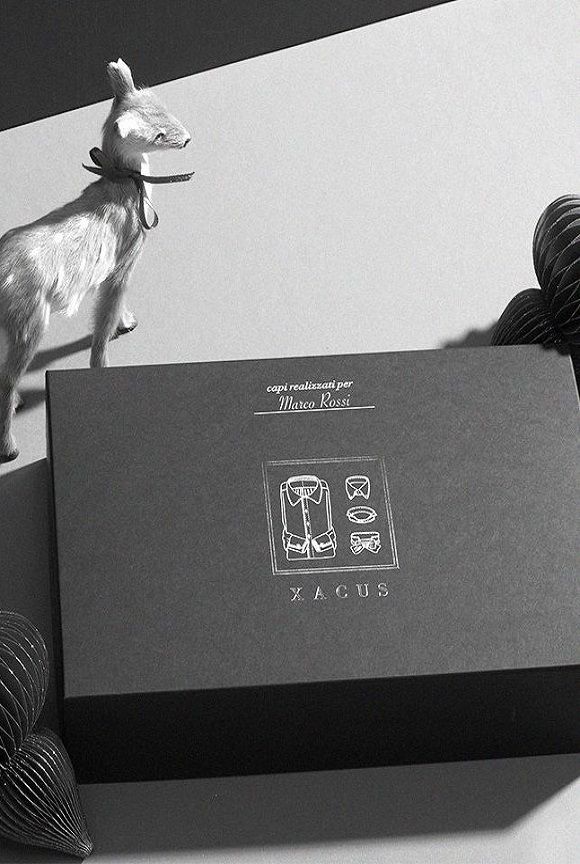A shirt and tie is de rigeur for impecable elegance at all times. The tie is what completes the look, adding that touch of style that makes it stand out from the crowd. But it has to be the right pairing for the outfit. There are several key factors to consider when choosing a tie, from the proportions to the shape, fabric, colours and even different the patterns and weaves. The tie has gone from symbol of absolute professionalism in the past to being worn with less formal, more casual looks today. We know that any tie will pair well with a white shirt, but here are some useful tips to help you avoid making mistakes with your shirt and tie combinations for guaranteed chic results.
Be careful with contrasts and geometric designs.
One of the things to take into consideration when creating the ideal match, is the size of the pattern on your tie and shirt. If both have stripes, then they should be in a different thickness. The same applies to the density of the stripes and therefore, a close-striped shirt should be paired with a tie that has wider-spaced stripes, and vice versa. If your choice falls on different geometric patterns, like a check shirt and a striped tie, or vice versa, it is best for the size and the density of the patterns to be similar. A classic combination using pattern on pattern, for example, is a regimental tie with diagonal strips in green and blue, worn with a blue striped shirt in colours to match the tie.


Play with patterns but use common sense.
The rule of thumb should be to avoid patterns that are too different, like a polka dot tie with a striped shirt, or a wearing horizontal stripes with vertical ones. But a polka dot tie will go with a check shirt if you are careful about pattern size. A suit with a large check can be paired with a shirt in small checks and tie with wide stripes or pattern, as long as sober colours are used, with a choice of shades that blend with one another with no bold contrasts.
Balance your colours and tones.
The best choice is definitely not to use more than three or four colours at a time. Generally speaking, neutral colours such as beige, grey or light blue are a good match for shirts that are white or pale blue, or another coordinated colour. If your choice should fall on a brighter colour of tie, then you are best balancing it with a shirt in a basic tone. For example, a deep blue suit with a pale blue shirt and a blue or brown tie; if you are wearing a grey jacket, then you should choose a white shirt and a black or claret tie; a brown suit should be worn with a beige shirt and a tie in a different shade of brown.
A tool to help you create your colour combinations is Itten’s colour circle, where next to every colour is the most similar shade, while its complementary colour is on the exact opposite side. When matching ties and shirts together, the simplest thing to do is to choose a contrasting colour and not a complementary one, but above all, to vary things with tones in the same colour so as to create a smooth, appealing result.









